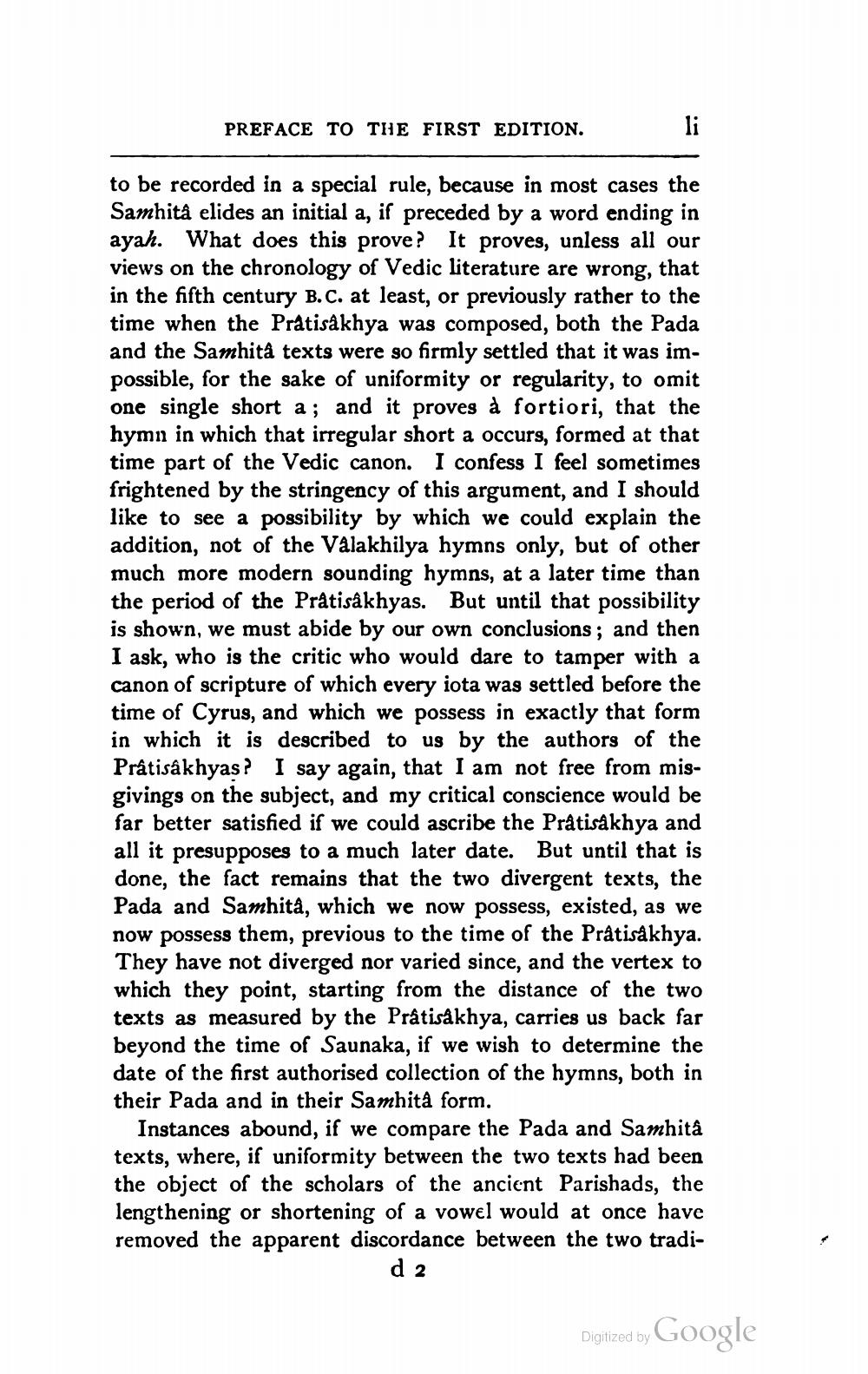________________
PREFACE TO THE FIRST EDITION.
li
to be recorded in a special rule, because in most cases the Samhitå elides an initial a, if preceded by a word ending in ayah. What does this prove? It proves, unless all our views on the chronology of Vedic literature are wrong, that in the fifth century B.C. at least, or previously rather to the time when the Prátisakhya was composed, both the Pada and the Samhità texts were so firmly settled that it was impossible, for the sake of uniformity or regularity, to omit one single short a; and it proves à fortiori, that the hymn in which that irregular short a occurs, formed at that time part of the Vedic canon. I confess I feel sometimes frightened by the stringency of this argument, and I should like to see a possibility by which we could explain the addition, not of the Valakhilya hymns only, but of other much more modern sounding hymns, at a later time than the period of the Prâtisakhyas. But until that possibility is shown, we must abide by our own conclusions; and then I ask, who is the critic who would dare to tamper with a canon of scripture of which every iota was settled before the time of Cyrus, and which we possess in exactly that form in which it is described to us by the authors of the Prâtisakhyas? I say again, that I am not free from misgivings on the subject, and my critical conscience would be far better satisfied if we could ascribe the Prátisakhya and all it presupposes to a much later date. But until that is done, the fact remains that the two divergent texts, the Pada and Samhità, which we now possess, existed, as we now possess them, previous to the time of the Prátisakhya.
They have not diverged nor varied since, and the vertex to which they point, starting from the distance of the two texts as measured by the Prátisåkhya, carries us back far beyond the time of Saunaka, if we wish to determine the date of the first authorised collection of the hymns, both in their Pada and in their Samhità form.
Instances abound, if we compare the Pada and Samhita texts, where, if uniformity between the two texts had been the object of the scholars of the ancient Parishads, the lengthening or shortening of a vowel would at once have removed the apparent discordance between the two tradi
d 2
Digitized by Google




